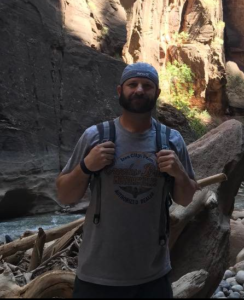Albert Hofmann, a Swiss chemist born on January 11, 1906, profoundly shaped the modern understanding of psychedelics through his discovery of lysergic acid diethylamide (LSD). His groundbreaking work not only revolutionized pharmacology and neuroscience but also sparked a cultural and scientific exploration into the mysteries of human consciousness. Hofmann’s life story is a fascinating blend of scientific curiosity, philosophical inquiry, and a deep respect for nature. As the “Father of LSD,” he left an indelible mark on science, medicine, and counterculture.
Early Life and Education
Albert Hofmann was born in Baden, Switzerland, the eldest of four children. Despite growing up in modest circumstances, he demonstrated an early interest in science and nature. His fascination with the natural world led him to study chemistry at the University of Zurich, where he focused on plant and animal biochemistry. Hofmann’s dedication and curiosity earned him a position at Sandoz Laboratories (now Novartis) in Basel, where he embarked on a career that would change the course of history.
The Discovery of LSD
Hofmann’s work at Sandoz Laboratories centered on ergot, a fungus that grows on rye and other grains. Ergot had long been known for its medicinal properties but also its potential for toxicity. In the 1930s, Sandoz was interested in isolating compounds from ergot to develop new pharmaceuticals. Hofmann’s task was to synthesize derivatives of lysergic acid, a key component of ergot.
In 1938, Hofmann first synthesized LSD-25 (lysergic acid diethylamide). At the time, the compound did not show significant promise and was set aside. However, Hofmann felt a lingering curiosity about LSD and revisited it five years later, in 1943. During this second synthesis, Hofmann accidentally absorbed a small amount of the substance through his skin, leading to the first-ever LSD experience. He described the effects as a mixture of “stimulated imagination” and “kaleidoscopic, fantastic images.”
Bicycle Day: The First Intentional LSD Trip
On April 19, 1943, Hofmann conducted a self-experiment to determine LSD’s effects. He ingested 250 micrograms, believing it to be a minuscule dose. What followed was an intense and unprecedented journey into altered consciousness. Hofmann’s perception of reality shifted dramatically, with vivid hallucinations and heightened sensory experiences. During this trip, Hofmann famously rode his bicycle home, an event now celebrated annually as “Bicycle Day” by psychedelic enthusiasts.
Hofmann’s initial experiences with LSD convinced him of its profound potential. He described it as a “medicine for the soul,” capable of unlocking hidden realms of the mind. This marked the beginning of a lifelong exploration into the nature of psychedelics and their applications.
LSD Enters the Scientific World
Following Hofmann’s discovery, Sandoz Laboratories began producing LSD for research purposes under the trade name Delysid. Throughout the 1950s and 1960s, scientists and psychiatrists around the world studied LSD’s effects on the human mind. It was used experimentally to treat various psychological conditions, including depression, anxiety, and addiction. Therapists found it particularly effective for fostering introspection and breaking down psychological barriers.
LSD also played a role in early neuroscience research. By altering brain function, it provided insights into the biological underpinnings of perception, cognition, and mental disorders. Hofmann himself believed that LSD could serve as a powerful tool for understanding consciousness and the mind-body connection.
The Counterculture Explosion
While Hofmann envisioned LSD as a tool for scientific and spiritual exploration, the 1960s saw it take on a life of its own. The psychedelic movement, fueled by figures like Timothy Leary, embraced LSD as a means of personal liberation and societal transformation. The substance became synonymous with the counterculture, influencing art, music, and social movements.
This widespread, unregulated use of LSD eventually led to controversy. Governments around the world, concerned about its unpredictable effects and association with anti-establishment movements, banned LSD in the late 1960s. This effectively curtailed scientific research for decades and left Hofmann deeply disheartened. He lamented the misuse of LSD and the loss of its potential as a scientific and therapeutic tool.
Hofmann’s Philosophical Insights
Hofmann’s relationship with LSD went beyond the laboratory. He saw it as a bridge between science and spirituality, capable of revealing the interconnectedness of all life. His experiences with LSD and other psychedelics, such as psilocybin, led him to explore the spiritual traditions of indigenous cultures, who had long used psychoactive substances in sacred rituals.
Hofmann’s writings reflect a deep respect for nature and a belief in the importance of reconnecting with the natural world. He often spoke about the “mystical experience” of unity and oneness that psychedelics could facilitate. For Hofmann, LSD was not merely a chemical compound but a tool for exploring the mysteries of existence.
Later Years and Advocacy
Despite the global crackdown on psychedelics, Hofmann remained an advocate for their responsible use. He believed that the prohibition of LSD was a tragic misunderstanding of its potential benefits. In his later years, Hofmann wrote extensively about his discoveries and experiences, authoring books such as LSD: My Problem Child. In this memoir, he detailed the history of LSD, his hopes for its future, and his concerns about its misuse.
Hofmann’s advocacy extended to the scientific community, where he called for a revival of psychedelic research. His efforts were not in vain; by the early 21st century, a renewed interest in psychedelics was underway. Studies at institutions like Johns Hopkins University and Imperial College London began to uncover the therapeutic potential of substances like LSD and psilocybin for treating mental health conditions.
The Legacy of Albert Hofmann
Albert Hofmann passed away in 2008 at the age of 102, leaving behind a legacy that continues to shape science, medicine, and culture. His discovery of LSD and his dedication to understanding its effects have inspired generations of researchers, therapists, and spiritual seekers. Today, LSD is once again being studied for its potential to treat depression, anxiety, PTSD, and other conditions, reflecting the vision Hofmann held throughout his life.
Hofmann’s story is a testament to the power of curiosity and the interplay between science and spirituality. His work challenges us to consider the profound possibilities of exploring the mind and the ethical responsibilities that come with such discoveries.
Conclusion
Albert Hofmann’s discovery of LSD was not merely a scientific breakthrough; it was a catalyst for a broader exploration of consciousness and the human experience. His life’s work underscores the importance of approaching psychedelics with respect, responsibility, and an open mind. As the world continues to grapple with the implications of his discovery, Hofmann’s legacy serves as both a guide and a reminder of the profound mysteries that lie within us all.
The post Albert Hofmann: The Father of LSD and the Journey into Psychedelics first appeared on Mycology Now.
The post Albert Hofmann: The Father of LSD and the Journey into Psychedelics appeared first on Mycology Now.




